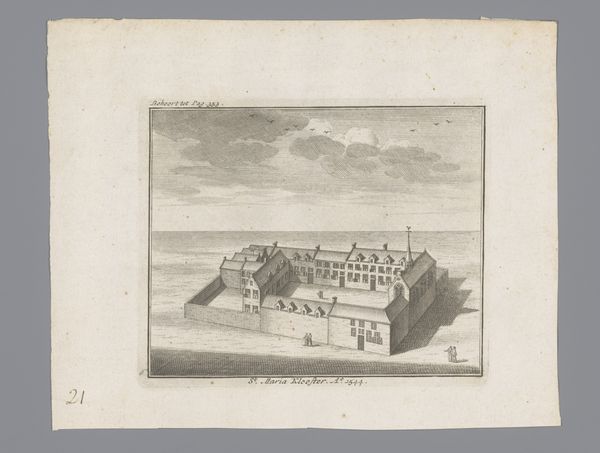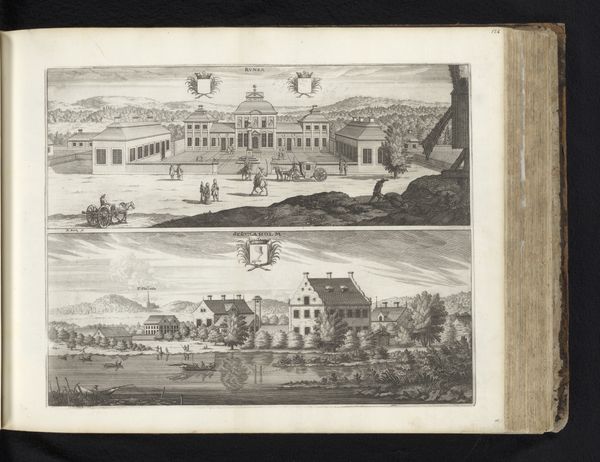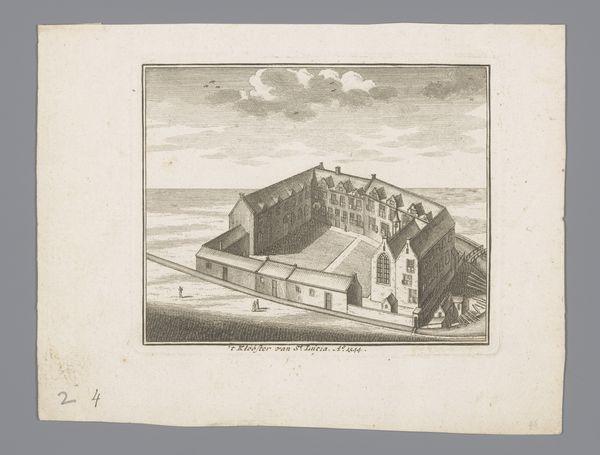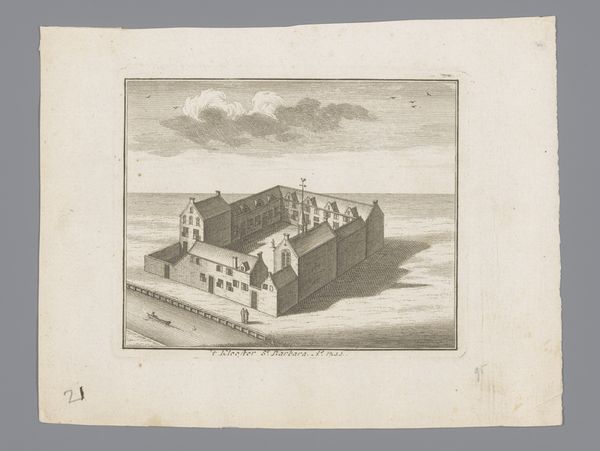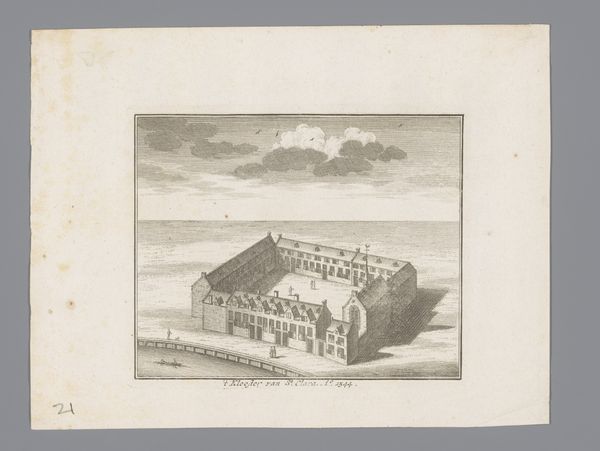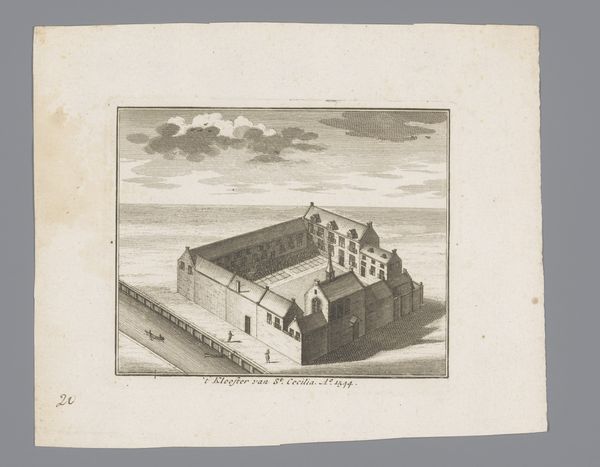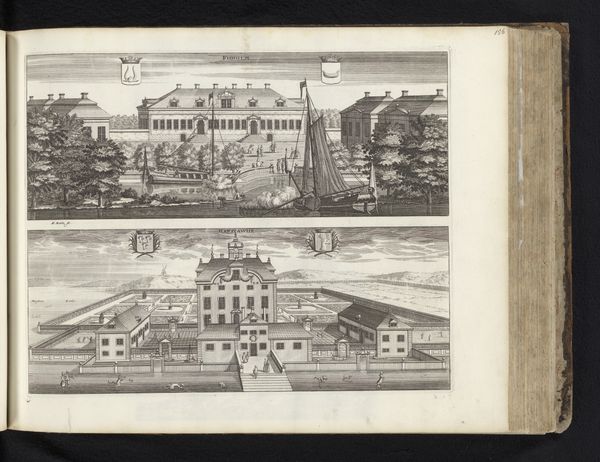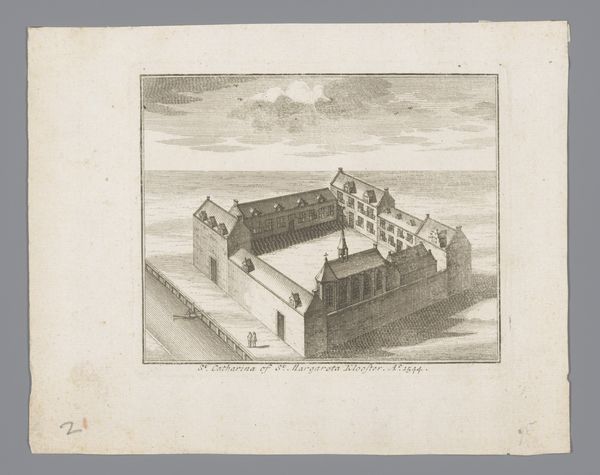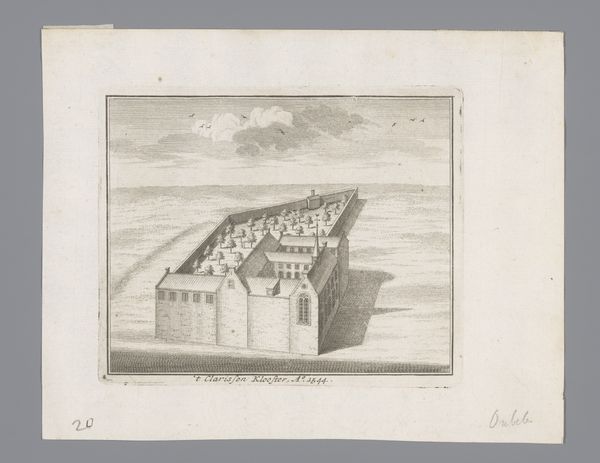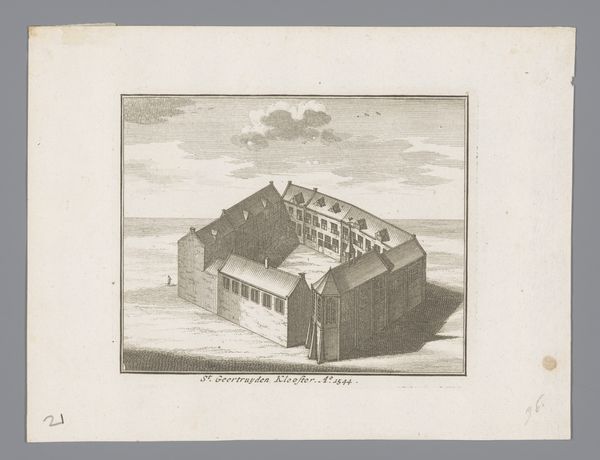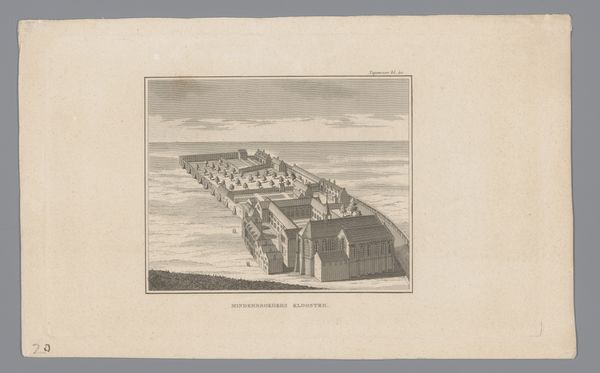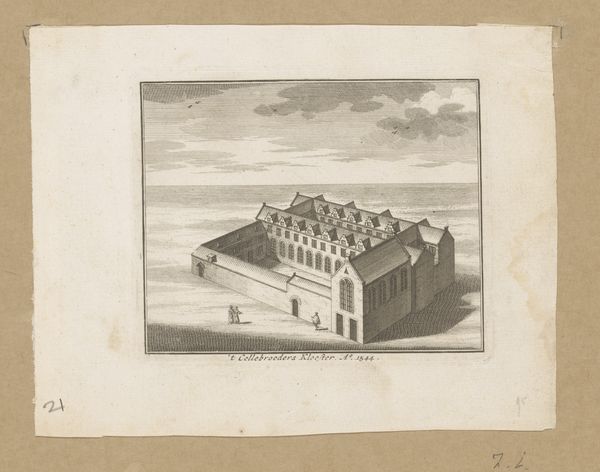
Vogelvluchtaanzichten op het klooster van Sint-Margaretha en het klooster van de Paulinianen, 1544 1729
0:00
0:00
print, engraving, architecture
#
baroque
# print
#
cityscape
#
engraving
#
architecture
Dimensions: height 110 mm, width 135 mm, height 115 mm, width 140 mm
Copyright: Rijks Museum: Open Domain
Curator: Well, look at this print; “Vogelvluchtaanzichten op het klooster van Sint-Margaretha en het klooster van de Paulinianen, 1544” from 1729. It depicts bird's-eye views of these two monasteries. My initial impression is quite captivating. The precision, despite the probable limitations of the printing process at the time, is just astounding. Almost unsettling, I must say! Editor: The engraver’s meticulous rendering highlights the monastic compounds’ ordered layout, doesn’t it? Notice the standardized structures and the seemingly relentless replication of architectural units. Each building functions as part of a larger system of control and, frankly, production of a certain way of life. Curator: Precisely! You see, looking at it evokes a feeling that something important took place here; like a theatre play from a time that barely exists anymore. One building has what appears to be a tall cross. Imagine the sheer willpower it took to make it! Editor: Consider too the material implications—the engraver using metal plates, laborious work hours—and the eventual consumption by viewers then. Printmaking allowed for broader circulation of information about these sites, effectively “branding” monastic power and ideals across society. How was such labor distributed and organized, and for whose profit? Curator: Mmmh… When viewing art pieces like this, I think of myself being alone, without anybody to turn to for help; maybe in the 16th century somewhere in a foreign land. Perhaps the monks used materials obtained from surrounding towns as a symbolic form of local taxation or some sort of... donation from locals! Editor: Interesting point, because engravings like this were often commissioned for very specific socio-political aims. They function both as documentation of existing structures and assertion of ownership or influence, transforming real physical spaces into symbols of ideological dominion and mercantile networks. It would be insightful to study contracts related to its creation. Curator: Fascinating perspective! Considering the details in light and shadow within these somewhat muted frames. It’s a real-life dollhouse. You make a fine argument here for labor in creating visual impact for spreading ideology. Editor: And what better way to reflect the real power of a dollhouse… Sorry! Cloister than this artwork in distributing it around, I guess! It’s quite the fascinating example.
Comments
No comments
Be the first to comment and join the conversation on the ultimate creative platform.
